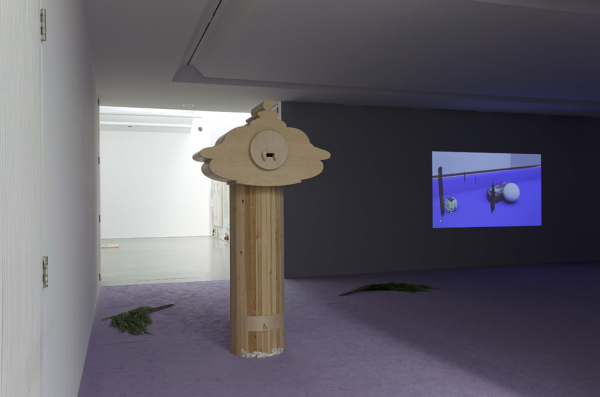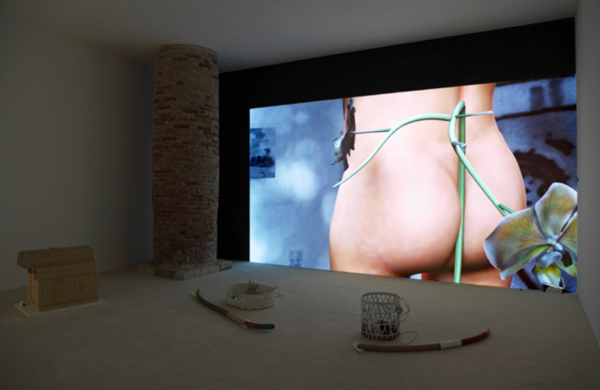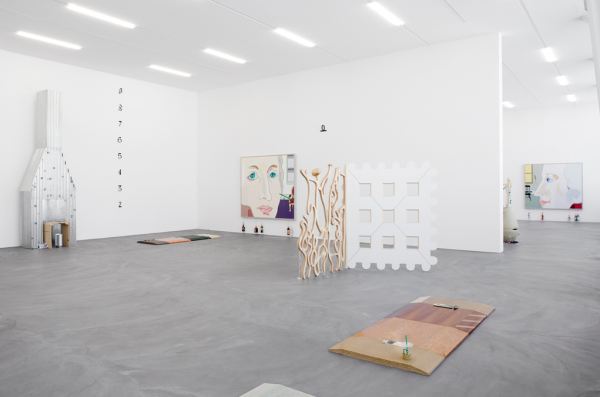Helen Marten
Sunday, 23 February 2014




Work from her oeuvre.
“Marten treats physical stuff the digital way: she drags and drops, compresses and unpacks, crashes and reboots. She’s obviously not the only one doing this, but she does it in a way that is as comfortable with sculpture as hammering or welding (although she actually does occasionally hammer and weld). Entering the London-based artist’s exhibition, ‘Take a Stick and Make it Sharp’, earlier this year at Johann König in Berlin felt like being dropped into Tron after a troll cluttered the movie with previously deleted data. You wandered around risking knocking into a gold-coloured American mailbox, which sprouted daisies and a little black cross, and was log-jammed with rolled-up envelopes (Home Grown, 2011). Sport socks were suspended from a wall-mounted pick-up-sticks of custom-welded steel tubes in shades of green and beige, like laundry hung out to dry by builders on bamboo scaffolding (Riggers, 2011).
You could go on elucidating the details and wordplay in the show but that would mean becoming entangled in convoluted descriptions, as experiencing Marten’s work is equivalent to finding folders full of stuff nestled into folders nestled into folders in your memory bank. Thisfeeling of being unable to retrieve and read data in a manageable way was expressed in tangible form on the gallery wall in the form of digitally printed wallpaper, the central element of which was a ‘wait’ cursor from an obsolete generationof Apple software – a black wristwatch – surrounded by blurry, vector-drawn steam-trainsand a Greek temple: the out-of-date ridiculed by the seriously antique (Some Civic Shades, 2011). The wristwatch symbol speaks to any viewer who, like me, always wonders if the time will come when they’ll get stuck and freeze – mouth open and saliva dripping like Patrick when SpongeBob asks him a question – on earlier cultural references and ways of inhabiting them. But then, this kind of recently outdated material is hot stuff for anyone wanting to understand how ideas and styles succeed one another – the genealogy of progress. Rustic’s Ransom (Peach, Pearl Grey, Clay) (2011) is a multi-punch-lined joke about this: three panels are mounted onto steel bars like a family crest of crossed swords, yet immersed neatly into each of their laser-cut surfaces of Corian (a synthetic material used for kitchen worktops) are Nokia mobile phones from earlier this century; they’re accompanied by a brick-sized piece of wood sprouting a delicate antenna-like twig. It’s like a Neanderthal ancestor of wireless communication.” – Frieze